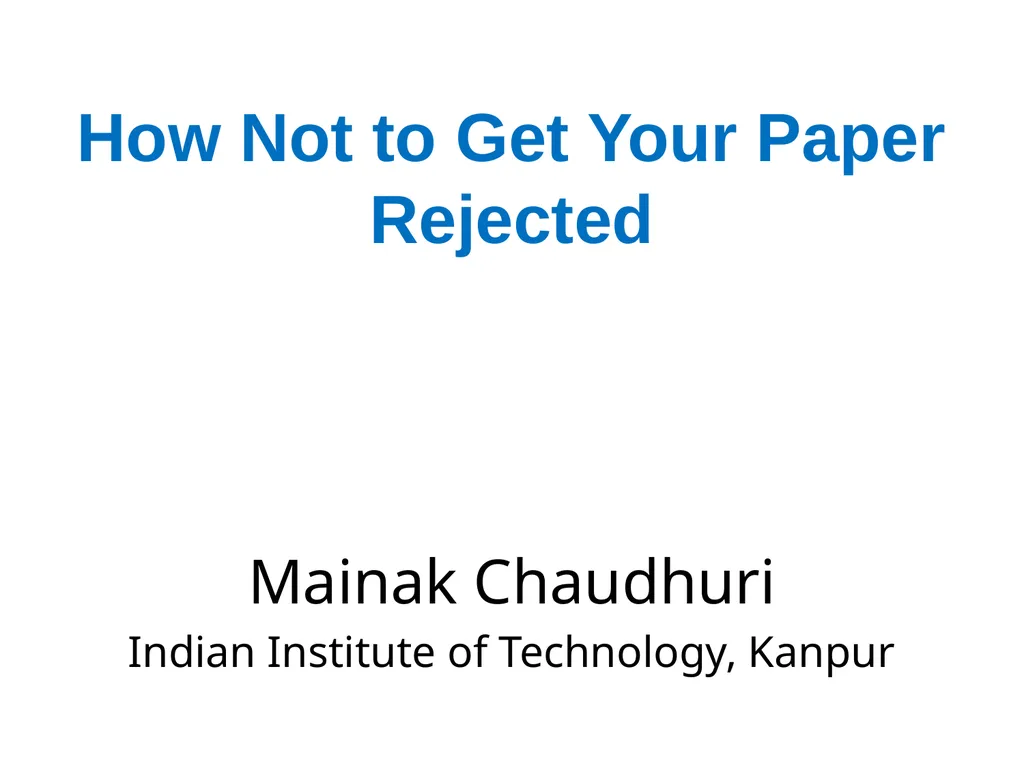
How Not to Get Your Paper Rejected Mainak
Author: cheryl-pisano | Published: 2025-08-06
Description: How Not to Get Your Paper Rejected Mainak Chaudhuri Indian Institute of Technology, Kanpur Prolog: Why Publishing is important Must tell your ideas to others Improves the chance of converging to a better idea (hundreds of brains working vs.
Download Presentation
Download the PPT/PDF: Download
Transcript:
Loading transcript…